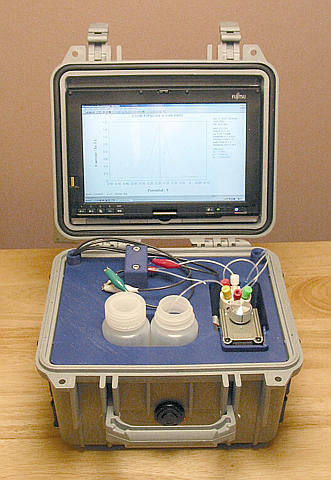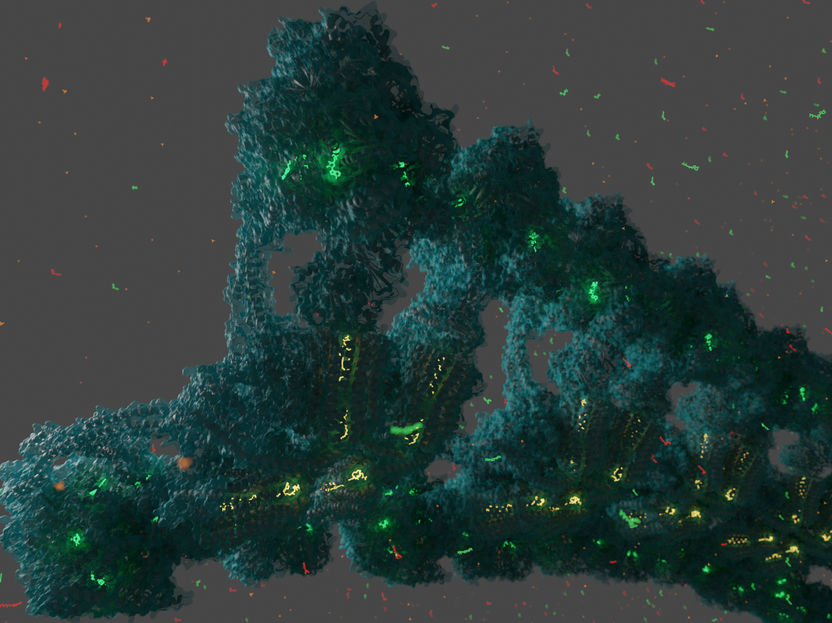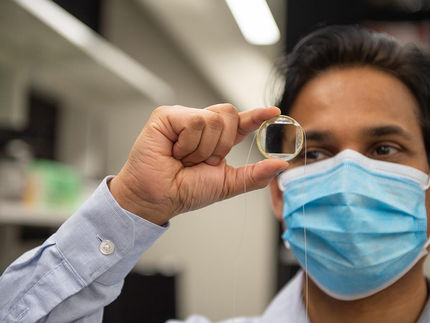New Method to Create Ultrafast 3D Images of Nanostructures
Protein structures of viruses can be analysed much faster
Lensless microscopy with X-rays, or coherent diffractive imaging, is a promising approach. It allows researchers to analyse complex three-dimensional structures, which frequently exist in nature, from a dynamic perspective. Whilst two-dimensional images can already be generated quickly and in an efficient manner, creating 3D images still presents a challenge. Generally, three-dimensional images of an object are computed from hundreds of individual images. This takes a significant amount of time, as well as large amounts of data and high radiation values.
A team of researchers from Leibniz University Hannover and other universities has now succeeded in accelerating this process considerably. The researchers developed a method in which two images of an object can be taken from two different directions using a single laser pulse. The images are then combined to form a spatial image – similar to the human brain forming a stereo image from two slightly different images of both eyes. The method of computer-assisted stereoscopic vision is already used in the fields of machine vision and robotics. Now researchers have used the method in X-ray imaging for the first time.
“Our method enables 3D reconstructions on a nanometric scale using a single image which consists of two images from two different perspectives”, says Professor Milutin Kovacev from the Institute of Quantum Optics at Leibniz University Hannover, who is one of the co-authors of the study.
According to the authors, the method will have a significant impact on 3D structural imaging of individual macromolecules and could be used in biology, medicine, as well as in the industry. For example, the protein structure of a virus could be analysed faster and with very little effort. The protein structure has an immense influence on the function and behaviour of a virus and plays a decisive role in medical diagnoses.
Original publication
Other news from the department science

Get the life science industry in your inbox
By submitting this form you agree that LUMITOS AG will send you the newsletter(s) selected above by email. Your data will not be passed on to third parties. Your data will be stored and processed in accordance with our data protection regulations. LUMITOS may contact you by email for the purpose of advertising or market and opinion surveys. You can revoke your consent at any time without giving reasons to LUMITOS AG, Ernst-Augustin-Str. 2, 12489 Berlin, Germany or by e-mail at revoke@lumitos.com with effect for the future. In addition, each email contains a link to unsubscribe from the corresponding newsletter.
Most read news
More news from our other portals
Last viewed contents
Federal_Food,_Drug,_and_Cosmetic_Act
Tunica_intima
Band_3
Puffball
Pope_Pius_IX
Drought_tolerance
Institute_for_the_Study_of_Academic_Racism

New sensor system improves detection of lead, heavy metals - PNNL develops inexpensive portable detection system for rapid, accurate analysis of toxic metals
Varicella_zoster_virus
Stanisław_Burzyński



















































